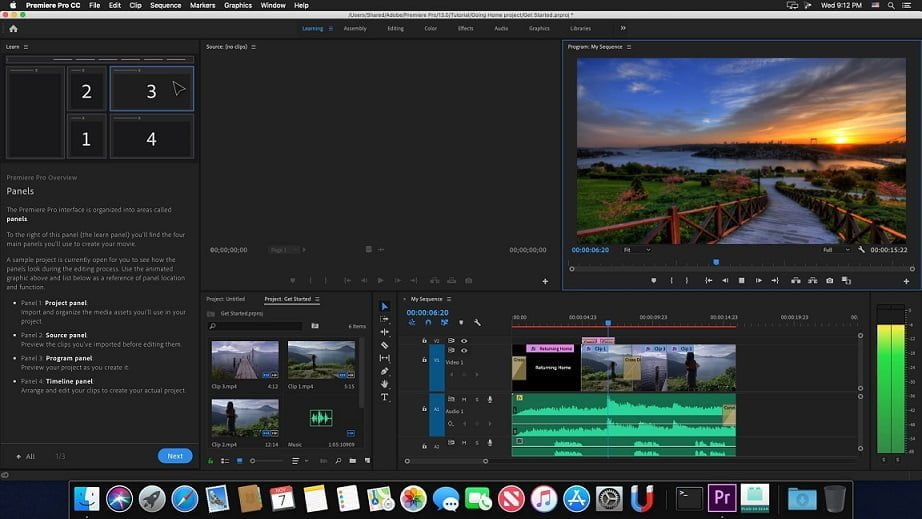
- #Photo pro for mac for mac#
- #Photo pro for mac install#
- #Photo pro for mac update#
- #Photo pro for mac pro#
At the very least you’ll still be able to use all your current software as normal via Rosetta 2, and in time when official M1 versions are released, those performance boosts – and likely the battery life savings as well – will be extremely welcome. If you’re a photographer and considering upgrading, I’d absolutely say the M1 MacBook is a safe bet. I’m certainly excited about what performance improvements we’ll see as more developers fully optimize their software for Apple’s silicon.
#Photo pro for mac pro#
Even when running non-optimized versions of apps, the M1 MacBook Pro still puts up a hell of a fight against a superpowered editing PC, and the fact that it’s able to outperform the PC on some tests when using M1-optimized beta apps is astonishing. While Hoyle didn’t give any comparisons, he said that there were ‘”no issues” working with 4K files in DaVinci Resolve Studio, a high-end video editing and color-correction app.Īll in, he says, there’s no reason for photographers to hold back. For reference, my desktop did the same export in 1:20. The Intel-based version of Premiere took 6 minutes, 25 seconds to export on the M1 MacBook, but the optimized M1 beta version took about half the time, at 3 minutes, 24 seconds. The PC was still significantly faster when it came to video, however. The M1 version of Lightroom also beat out the PC when it came to importing 100 raw images. It took 22 seconds to align the layers and 46.6 seconds to merge them - a faster overall time than my immensely powerful editing rig was able to achieve. However I then ran the same tests on the beta version of Photoshop that supports Apple M1. The PC took 20 seconds to align the layers and 53 seconds to merge them - a clear victory for the PC. I compared that to an exceptionally powerful Windows desktop PC that was built with an AMD RyX CPU, Nvidia RTX Titan graphics and 128GB RAM, specifically to be a beast with editing photos and 8K video. Intel-based Photoshop, via Rosetta 2, took 50.3 seconds to align the layers and 1 minute, 37 seconds to merge them. It’s a technique I use regularly in my product photography, so it’s important for me to have good efficiency here.

I tested how long it took Photoshop (both in Intel and M1 beta versions) to align 19 full-resolution raw images and then to merge them into a focus-stacked image. He found that the M1 MacBook Pro with 16 GB RAM didn’t compete when it was running Intel-based Photoshop, but it was a different story when he tried the M1 beta version. Hoyle is CNET’ s European lead photographer. Professional photographer Andrew Hoyle said that he was “astonished” by the performance, and concludes that an M1 Mac is a safe bet for photographers looking to upgrade…

In the meantime, we apologize for any inconvenience that you may have incurred but thank you for your understanding.įor further information, please contact your nearest authorized SIGMA subsidiary / distributor.An M1 MacBook Pro photo editing test found that the 13-inch M1 MacBook Pro running M1-optimized apps was faster than a ‘”beast” of a Windows desktop PC – despite the fact that the latter was specifically specced with photo editing in mind and had a massive 128 GB of RAM.
#Photo pro for mac update#
We are currently working on releasing software compatible with macOS 11.0.1 Big Sur and will update it when it is complete.įor customers using any of these software, please refrain from updating to macOS 11.0.1 Big Sur.

#Photo pro for mac for mac#
"We would like to share that we found an issue to startup our RAW development software SIGMA Photo Pro 6.7.4 for Mac, SIGMA X3F Plug-in for Photoshop® for Mac on macOS 11.0.1 Big Sur released by Apple. I sure hope Apple updates SPP soon, so people using it on a brand new Mac don't have a bad experience.
#Photo pro for mac install#
Weird, huh?īTW, the install required that I use Rosetta (presumably because SPP is not ready to work with Apple chips yet. I could view the image turned 90 degrees, but not upright. It worked very fast, but whenever I would view an image at 100% or even at 50% size it would get turned upside down, and no matter what I tried to do in order to get the image to turn or flip upright, the image would turn upside down. The day before yesterday I had the opportunity to try the latest version of SPP on a brand new MacBook Pro, with that new M1 chip and 16 GB of RAM.


 0 kommentar(er)
0 kommentar(er)
